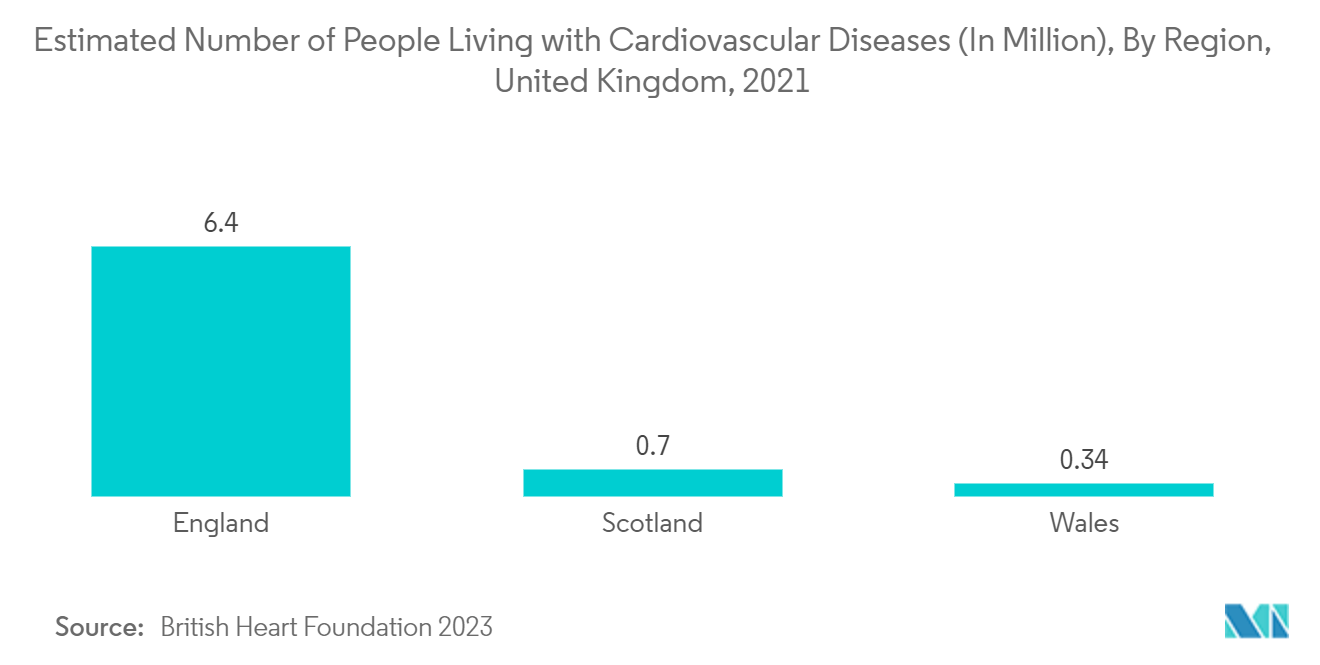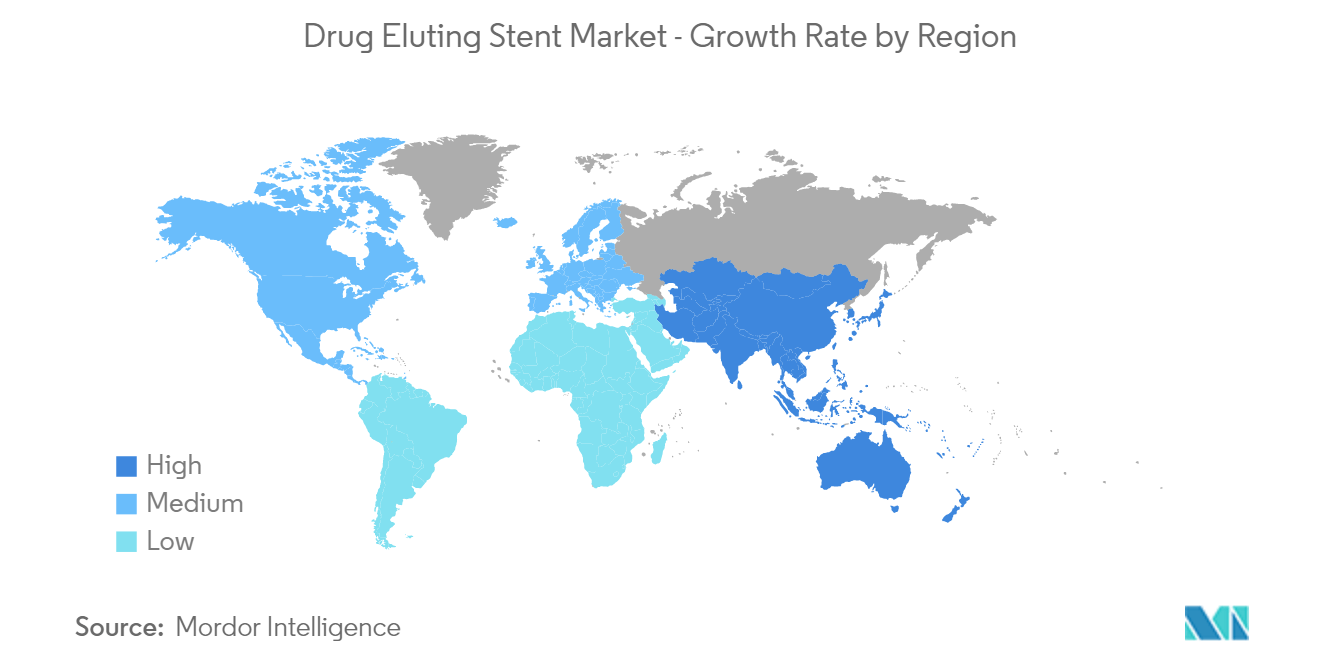Market Trends of Drug Eluting Stent Industry
Coronary Artery Disease Segment is Expected to Hold a Significant Market Share in the Drug Eluting Stent Market
Coronary artery disease (CAD) is a cardiovascular condition characterised by the narrowing or blockage of the coronary arteries, which supply oxygen-rich blood to the heart muscle. The accumulation of fatty plaques, cholesterol, and other substances on the artery walls causes the blockage. This lead to symptoms such as chest pain or discomfort, known as angina. DES are coated with anti-proliferative drugs that are slowly released over time to inhibit the growth of smooth muscle cells in the arterial wall, thereby preventing the re-narrowing of arteries. The CAD segmental growth is attributed to the rising burden of coronary artery disease, and technological advances in the drug-eluting stent over the forecast period drive the segment growth. For instance, according to a study published by the National Library of Medicine, in February 2022, coronary drug-eluting stents reduce in-stent restenosis by delivering drug combinations with several effects. These stents help to inhibit cell growth and reduce the risk of restenosis by releasing the drug over time, thereby improving the long-term outcomes of patients with CAD. Thus, the benefits of the drug-eluting stent to treat patients with coronary artery disease are anticipated to boost segment growth.
Furthermore, according to the National Heart, Lung, and Blood Institute update of March 2022, about 18.2 million American adults were affected by coronary artery disease, making it the most common type of heart disease in the United States. Similarly, according to a CDC update of March 2023, about 5% of adults aged 20 and older had CAD in 2021. Thus, with the high burden of coronary artery disease, the demand for drug-eluting stents is expected to increase, thereby driving market growth.
Companies are introducing new, more sophisticated drug-eluting stent systems to expand their product footprint, which is anticipated to support coronary artery disease, thereby driving segmental growth significantly. For instance, in August 2022, Medtronic launched its Onyx Frontier drug-eluting stent (DES), a new interventional offering for coronary artery disease (CAD) designed to have an updated delivery system, improved flexibility and lower crossing profile. Such an initiative is expected to drive segmental growth.
As a result of the factors such as the high burden of coronary artery disease, and company initiatives for new product development, the drug-eluting stent segment is expected to have a sizable proportion of the market in the studied market throughout the forecast period.

North America is Expected to Hold a Significant Share in the Market and Expected to do Same Over the Forecast Period
North America is expected to hold a significant market share in the drug-eluting stent market due to favourable reimbursement policies and a high incidence rate of artery diseases in this region. Moreover, technological advancements in drug-eluting stents and the presence of well-established healthcare infrastructure are also fueling the growth of the overall market. For instance, according to the Journal of the American College of Cardiology published in February 2023, the incidence rate of atherosclerotic cardiovascular disease was 2.60 per 1,000 person-years among those with raised 10-year predicted risk, 1.87 in those with low 10-year but elevated 30-year predicted risk and 0.32 in those with low 10-year and 30-year predicted risk in the United States. Thus, with the high burden of atherosclerotic cardiovascular disease, the demand for its treatment with drug-eluting stents increases, leading to market growth in the region.
Additionally, as old-age patients are more likely to develop cardiovascular diseases, including CAD, the demand for drug-eluting stents for their treatment increases. Thus, the growing geriatric population in the country supports further market expansion in the region. For instance, according to an article published by AK Journals in March 2022, CAD is present in 50% of older women and 70%-80% of older men. Additionally, according to the Hub press release in December 2022, Canada's elderly population has grown to 7.34 million in 2022. Over 20 years, Canadians aged 65 and older will increase by 49% to 10.93 million in 2042. Also, according to the World Bank update, the total population of Mexico aged 65 and above was 10.6 million in 2022. Thus, a high burden of an ageing population with associated CAD will likely increase the adoption of drug-eluting stents, thereby driving market growth.
Additionally, key market players in the region are developing novel products and technologies to compete with existing products, while others are acquiring and partnering with other companies trending in the market to increase the product footprint, thereby driving regional growth over the forecast period. For instance, in June 2021, Abbott reported that their product line XIENCE drug-eluting stent had received approvals for one-month Dual Antiplatelet Therapy (DAPT) from the U.S. FDA as the shortest blood thinning course for patients with high bleeding risk in the U.S. region. Such development is expected to drive market growth over the forecast period.
Thus, factors such as the high incidence rate of coronary artery diseases and strategic initiatives taken by key market players are expected to boost the market growth over the forecast period in the North America Region.


